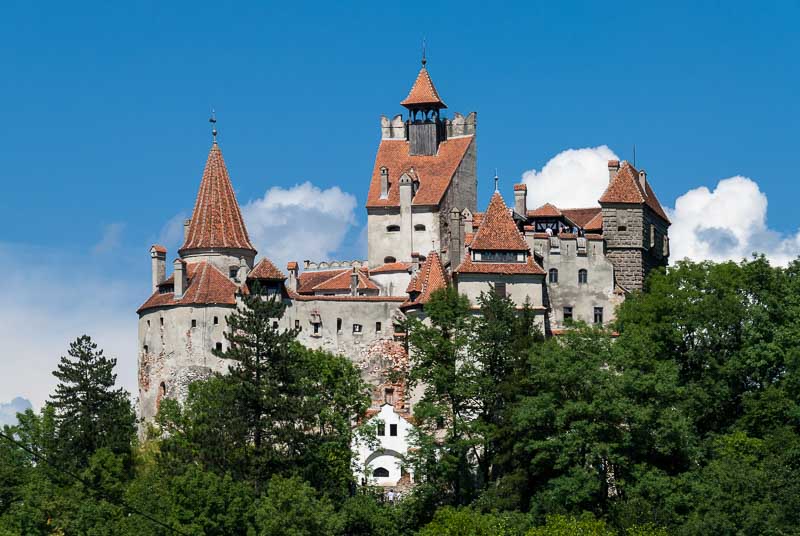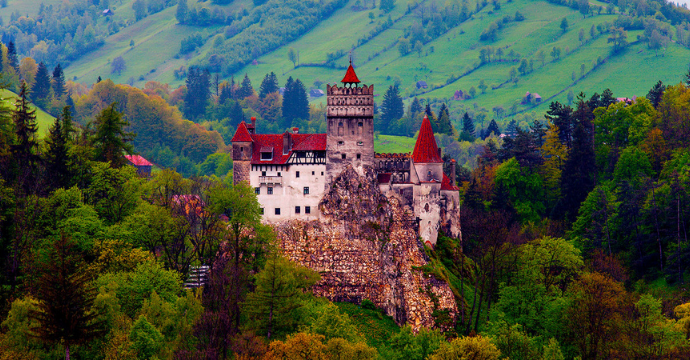
Introduction
Europe's landscape is adorned with an array of captivating castles that seem to have sprung straight from the pages of fairy tales. These magnificent structures boast remarkable architecture and are steeped in legends and history. The allure of Europe's enchanting castles lies not just in their stunning facades but in the stories they hold within their walls, blending architecture and folklore into a mesmerizing experience.

Legends and Lore
The rich tapestry of legends woven around Europe's castles lends an air of mystique to these ancient edifices. From the fairytale-like Neuschwanstein Castle in Germany, said to be the inspiration for Disney's Sleeping Beauty Castle, to Bran Castle in Romania, often associated with the Dracula myth, these stories transport visitors to bygone eras of chivalry, bravery, and romance.
One such tale is that of Ireland's Blarney Castle, home to the famous Blarney Stone. Legend has it that those who kiss the stone are bestowed with the gift of eloquence. Meanwhile, Edinburgh Castle in Scotland boasts stories of paranormal occurrences and is said to be one of the most haunted places in Europe, with a history stretching back over a thousand years.
Architectural Marvels
The architecture of Europe's castles is a testament to the craftsmanship and engineering prowess of their eras. The diversity of styles, from the imposing medieval fortresses to the ornate Renaissance palaces, showcases the evolution of architectural techniques. The boldness of Spain's Alhambra with its intricate Moorish designs stands in stark contrast to the military practicality of England's Tower of London.
The fairytale-like appearance of Germany's Hohenzollern Castle perched atop a hill, exemplifies the romantic revival architecture of the 19th century. On the other hand, the imposing walls and strategic battlements of Krak des Chevaliers in Syria, though not in Europe, remind us of the strategic importance of castles in both warfare and governance.
Preservation Efforts
Preserving these historic treasures requires a delicate balance between maintaining their authenticity and making them accessible. Many castles have undergone extensive restoration efforts to prevent further deterioration, ensuring that future generations can still marvel at their grandeur.
The Château de Chambord in France, a masterpiece of the French Renaissance, underwent meticulous restoration to recapture its former opulence. Similarly, the restoration of Windsor Castle following the devastating fire in 1992 showcased the dedication to preserving not just the architectural splendor but the historical significance of these structures.
Tourism and Cultural Significance
The draw of Europe's enchanting castles extends beyond architecture enthusiasts. They are popular tourist destinations, offering visitors a glimpse into the past and immersing themselves in the stories that have shaped European history. The economic impact of castle tourism also contributes to the preservation of these cultural treasures.
Conclusion
Europe's enchanting castles are more than just stone and mortar; they are repositories of history, legends, and architectural brilliance. Each castle tells a unique story, transporting us to different eras and allowing us to relive the tales of knights, royalty, and intrigue. As visitors wander through the corridors, stand on the ramparts, and hear the whispers of the past, they become a part of the ongoing narrative of these spellbinding structures. In a world that is ever-changing, Europe's castles stand as timeless witnesses to the beauty of human creativity and the power of enduring legends.